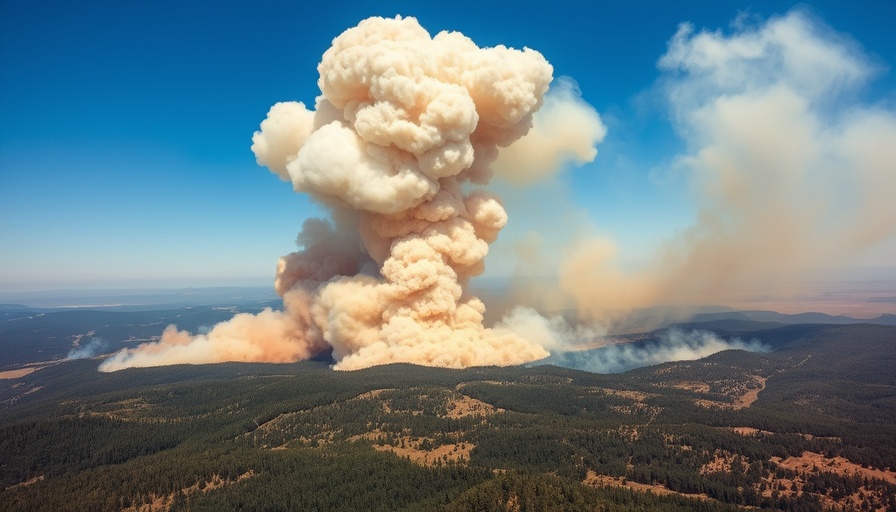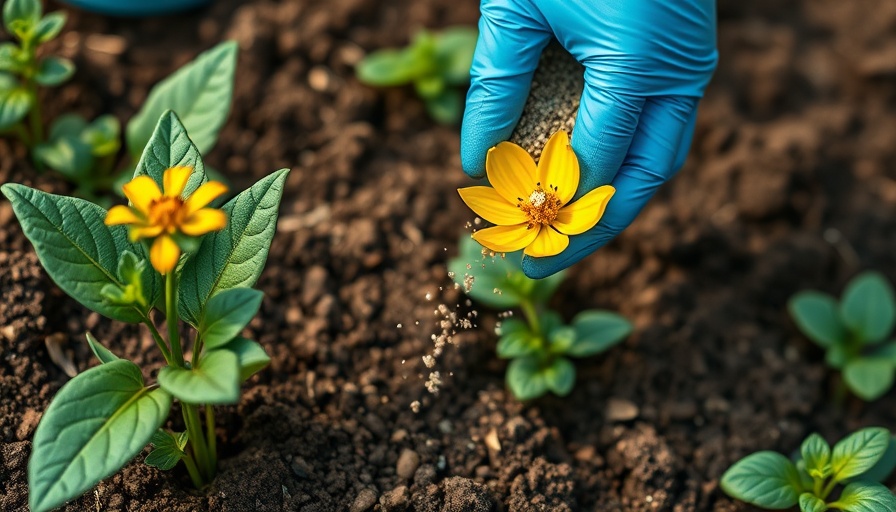
Understanding the Impact of Wildfire Smoke on Your Garden
Wildfire smoke during the dry season can significantly affect the health of your garden, leading to challenges from reduced sunlight to ash coating your crops. This issue is becoming more prevalent due to the increasing frequency and intensity of wildfires across the country, especially in areas like the Pacific Northwest. For homeowners passionate about gardening, understanding how smoke travels and its effects is crucial.
What Happens to Plants?
When wildfire smoke envelops your garden, it doesn’t just obstruct sunlight; it also hampers photosynthesis, essential for plant growth. The buildup of ash poses a multi-faceted threat. Ash can coat leaves, hindering their ability to breathe and absorb sunlight, while also creating a toxic layer that may include harmful residues from burned structures. Odors and tastes from the ash can also plague your fruit and vegetable harvests, making them unappetizing.
Preventative Measures for Your Garden
As the wildfire season approaches, adopting preventative gardening practices is vital. Here are some actionable insights to safeguard your plants:
- Cover Your Crops: Use fabric covers or garden cloths to protect sensitive plants from ash and smoke.
- Improve Air Quality: Indoors, consider using air purifiers to mitigate smoke inhalation when working in your garden.
- Mulch and Water Wisely: Proper watering and mulching can help keep the soil moist and lessen the ash's impact on soil nutrients.
- Plan for Recovery: Have a recovery plan post-wildfire smoke. This may include cleaning ash from your plants and assessing the damage to determine if treatments are needed.
Long-Term Strategies for Resilience
In addition to immediate prevention methods, consider implementing long-term strategies to enhance the resilience of your garden against wildfires. These may include:
- Choose Hardy Plants: Select wildflower varieties and other plants that are more resistant to smoke and ash.
- Build Elevated Planter Boxes: Construct elevated boxes to keep your plants away from toxic ash that may settle on the ground.
- Integrate Water-Saving Techniques: Automated watering systems or slow-drip watering can help maintain soil moisture during smoky conditions.
How to Know When to Resume Gardening?
As air quality returns to normal, how do you know when it’s safe to go back outside and tend to your garden? Be sure to monitor air quality indices and wait for advisories indicating that smoke levels have significantly decreased. Once it’s safe, be prepared to clean any residual ash from your plants to ensure that they remain healthy and viable.
Community and Support Resources
Engaging with local gardening communities can also yield innovative solutions and support for maintaining your garden through wildfire seasons. You can access resources at local gardening clubs, forums, or even seek advice from fellow gardeners who might have faced similar challenges.
In light of the evolving climate conditions, protecting your garden has never been more essential. Embracing community support and implementing these strategies allows for continued growth and beauty in your outdoor space.
For further guidance on creating robust gardening solutions or enhancing your outdoor experience, consider reaching out to local experts. Nother-LawnCare.com, led by Everett Lucas, offers a range of property management services tailored to ensure your outdoor spaces remain pristine, especially before wildfires hit. Call now at 231-450-3414.
 Add Row
Add Row 
 Add
Add 


Write A Comment